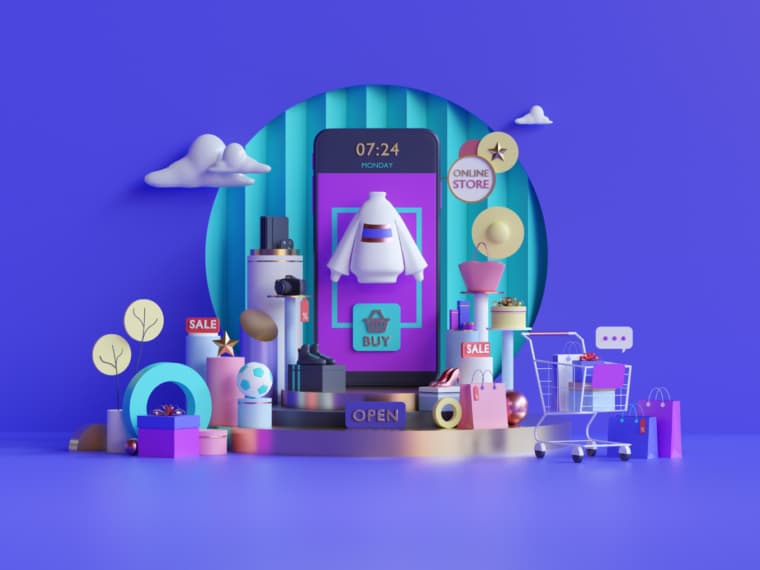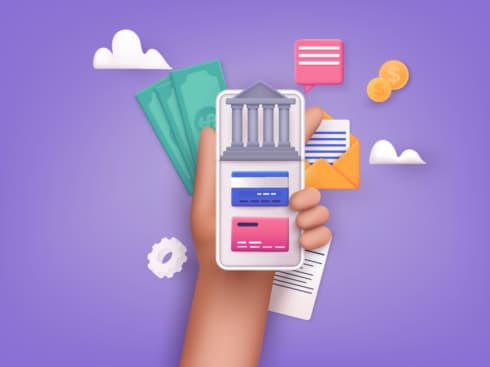
The ecommerce market is expected to reach $400 Bn by 2030, growing at an estimated CAGR of 18.9%
In India, there are over 5,217 active ecommerce startups. With so much competition, standing out can be a difficult task
Read to understand the basics that every D2C founder and marketer must know to make their startup stand out
The Indian ecommerce market is thriving. The ecommerce market is expected to reach $400 Bn by 2030, growing at an estimated CAGR of 18.9%. In India, there are over 5,217 active ecommerce startups. With so much competition, standing out can be a difficult task.
To differentiate your brand and lead the D2C space, you must know certain valuable D2C terms. Read to understand the basics that every D2C founder and marketer must know to make their startup stand out.
- Return On Ad Spend (ROAS): It is an important key performance indicator (KPI) in online and mobile marketing and refers to the amount of revenue that is earned for every dollar spent on a campaign.
- Cost Per Acquisition (CPA): It is a marketing metric that measures the aggregate cost to acquire one paying customer on a campaign or channel level.
- Conversion Rate Optimisation (CRO): It is the process of increasing the percentage of conversions from a website or mobile app.
- Profit And Loss (P/L): It is a financial statement that summarises the revenues, costs, and expenses incurred during a specified period.
- Direct To Consumer (DTC): The DTC retail model involves selling products without the help of third-party retailers or wholesalers.
- Click Through Rate (CTR): It is the number of clicks that your ad receives divided by the number of times your ad is shown. Clicks ÷ impressions = CTR.
- Cost Per 1000 Impressions (CPM): is a marketing term used to denote the cost an advertiser pays per one thousand advertisement impressions on a web page.
- Add To Cart (ATC): It is a feature of ecommerce stores that allows customers to choose items to purchase without actually completing the payment.
- Initiate Checkout (IC): It refers to when someone starts the checkout process to buy something from your site.
- View Content (VC): It is typically set up to fire when visitors browse through a deeper page on site. As such, it can help to understand how people are engaging with sites and with specific pages.
- Page View (PV): Whenever a person visits a web page, it is referred to as a ‘page view’. Page views are tracked by applications that monitor websites and record the amount.
- Domain Name System (DNS): It maps the name people use to locate a website to the IP address that a computer uses to locate that website.
- Split Testing (A/B Test): It refers to a randomised experimentation process wherein two or more versions of a variable (web page, page element, etc.) are shown to different segments of website visitors at the same time. This is done to determine which version leaves the maximum impact and drives business metrics.
- Average Order Value (AOV): It tracks the average dollar amount spent each time a customer places an order on a website or mobile app.
- Business To Business (B2B): It is the exchange of products, services or information between businesses.
- Call To Action (CTA): A marketing term referring to the next step or action that the marketer wants the consumer to take. A CTA can be as direct as a button that says “Buy Now,” or as subtle as “Read More.”
- Click To Open Rate (CTOR): The CTOR metric is calculated by dividing the number of clicks by the number of opens. A good CTOR should be between 20% and 30%, depending on the industry and goal.
- Lifetime Value (LTV): Customer Lifetime Value (CLTV) is the gross profit a customer delivers to your business in their lifetime.
- Pay Per Click (PPC): It is a digital advertising model in which a company pays an ad publisher for each user click on its advertisements.
- Search Engine Optimisation (SEO): It is the process of improving the quality and quantity of website traffic to a website or a web page from search engines.
- Stock Keeping Unit (SKU): It is used by retailers to identify and track their inventory, or stock.
- Harmonised Tariff Code (HTC): It is a classification system used in the United States to help determine customs duties to be paid on imports. HTS codes are 10-digits (the first six digits are the same as the HS code for the goods).
- Application Programming Interface (API): It is a software intermediary that allows two applications to talk to each other.
- Comma Separated Values (CSV): It is a text file that has a specific format which allows data to be saved in a table structured format.
- Cost Of Goods (COGS): COGS includes all of the direct costs involved in manufacturing products.
- Return On Investment (ROI): It is a mathematical formula that investors can use to evaluate their investments and judge how well a particular investment has performed compared to others.
- Terms Of Service (TOS): A set of rules and regulations attached to a software service or Web-delivered product by a provider.
- Monthly Recurring Revenue (MRR): It is the predictable total revenue generated by your business from all the active subscriptions in a particular month.
- Point Of Sale (POS): It is a place where a customer executes the payment for goods or services and where sales taxes may become payable.
- User Interface (UI): It is the point of human-computer interaction and communication in a device & also the way through which a user interacts with an application or a website.
- User Experience (UX): It encompasses all aspects of the end-users’ interaction with the company, its services, and its products.
- Customer Relationship Manager (CRM): A CRM system is a technology for managing all of the company’s relationships and interactions with customers. It helps companies stay connected to customers, streamline processes, and improve profitability.
- Above The Fold: It is the site area we see when a website is loaded, without having to scroll down.
- Churn rate: It is a measure of the number of customers or employees who leave a company during a given period.
- Heat Maps: It is a two-dimensional representation of data in which values are represented by colours.
- Upselling: It is an attempt to convince a customer to purchase something additional or more costly.
- Downselling: It is the technique of offering a more budget-friendly alternative to the product or service initially considered by the customer.
- Favicon: Also known as a shortcut icon, website icon, tab icon, URL icon, or bookmark icon, a favicon is a file containing one or more small icons, associated with a particular website or web page.
- Landing Page: It is a standalone web page that a person “lands” on after clicking through from an email, ad, or other digital locations.
- Cookie: These are text files with small pieces of data, such as a username and password, that are used to identify your computer as you use a computer network.
- Pixel: It is the smallest addressable element in an all-points-addressable display device, and thus the smallest controllable element of a picture displayed on the screen.
- Catalogue: A catalogue describes data set attributes and indicates the volumes on which a data set is located.
- 404 Error: It is a web page designated to be displayed when a request triggers the HTTP 404 response code. This code means the client/visitor was able to locate the server, but not the specific destination.
- Bounce Rate: It is a single-page session divided by all sessions or the percentage of all sessions on your site in which users viewed only a single page and triggered only a single request to the Analytics server.
- Sales Funnel: Also called a purchase funnel, it is the visual representation of the customer journey, depicting the sales process from awareness to action.
- Prospection: The process of initiating and developing new business by searching for potential customers and clients for your products or services.
- Retargeting: It is a type of online advertisement aimed at consumers who have already had some contact with the advertising brand or the products being advertised.
- Affiliate: A business relationship wherein one company owns less than a majority stake in the other company’s stock.
- Evergreen: A long-term, sustainable marketing approach that doesn’t rely on current trends or events, evergreen marketing is a great way to stay ahead of the competition.
- Congruency: Congruence in marketing is simply making the attention we generate or manage uniform in a natural way.
- Keyword: A term used in digital marketing to describe a word or a group of words an Internet user uses to perform a search in a search engine or search bar.
- Lead: Any individual or organisation within your marketing reach who has interacted with your brand or has the potential to become a future customer.
- Logistics: Marketing logistics pertains to the process of delivering the information from the producer to the market.
- Profit Margin: The amount of money made by a company or a business activity, calculated by dividing income by revenues, or how many cents of profit are generated for every dollar of sales.
- Net: The overall profitability of a company after all expenses and costs have been deducted from total revenue.
- Gross: The amount your business earns from selling goods or services before you subtract taxes and other expenses.
- Social Proof: It is the influence that the actions and attitudes of the people around us (either in real life or online) have on our own behaviour.
- XML Sitemap: A file that lists a website’s important pages, making sure Google can find and crawl them all.
- GIF: An acronym for graphics interchange format, a digital file format devised in 1987 by the Internet service provider CompuServe as a means of reducing the size of images and short animations.
- Aspect Ratio: It is a proportional relationship between an image’s width and height.
- Ad Placement: The group of ad units that specify the areas on the website where advertisers can place their ads.
- Creative: It is the ad served to users on a webpage, app, or another digital environment.
- Targeting Demographics: Demographic targeting is defined as a type of marketing segmentation. Segments include family size, religion, gender, age, ethnicity, education and even income.
- Target Market: It is a specific group of people with shared characteristics that a business markets its products or services to.
- Resolution: Identity resolution helps marketers join the dots across all online and offline touchpoints where prospects and customers engage with the brand. This includes all digital, telephonic, virtual, mobile, and physical channels of contact and any other new touchpoint that may emerge in the future.
- User Generated Content: Content related to your brand that’s created by someone who’s not an official representative of your business.
- Attribution Window: Also known as conversion window, it is a defined period of time in which a publisher can claim that a click or impression led to an install.
- Business Manager: It is an umbrella term for various management positions responsible for overseeing elements of day-to-day operations at a company or business.
- Bid Strategy: A bid strategy that automatically sets bids for your ads based on that ad’s likelihood to result in a click or conversion.
- Search Term: Also known as a search query, is the word or phrase someone enters into a search engine, such as Google.
































 Ad-lite browsing experience
Ad-lite browsing experience